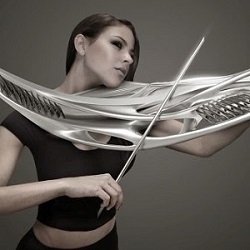Self-sustaining power – smart materials convert wasted energy into electricity
New materials allow electricity to be generated from wasted energy in the environment.
Electronics are getting smaller, cheaper and more powerful; scientists and engineers are always on the look-out for more efficient ways to power them. Nanogenerators, which were first invented in 2006, are electronic components which can use things like body movement, wind, vibrating machinery or magnetic fields to generate electricity. ‘Nano’ – because the key components of the device are nanometres in size. That’s around a million times smaller than a grain of sand and when the nanogenerators are integrated onto a flexible electronic chip, they are small enough to hold between two fingers.
Energy is being converted between different forms everywhere and all of the time. During these conversions, a lot of energy can be wasted. Energy harvesting is the borrowing of energy from any source in the environment and converting it into a more useful form in order to power something. Just like solar panels convert the light energy from the sun into electricity, nanogenerators convert movement or vibrational energy into electricity.
The ‘nano’ components of nanogenerators are ordered hair-like structures too small to see. These structures, known as nanowires, are piezoelectric; a property of some materials which allows them to generate electricity from being stressed. These stresses could be anything from pressing, vibrating, stretching, squishing or bending etc. Because nanowires are so thin they are more flexible and so more sensitive to any movement than large pieces of the same materials. They are also more efficient at converting this movement into electricity. Current research is looking into combining two different types of piezoelectric materials to make a composite nanowire which is soft and flexible on the outside and harder but more energy conversion efficient on the inside.
From piezoelectric violins to clothing which powers your mobile phone, the potential applications of these new materials and nanogenerators are vast. Health monitoring for example, using implantable devices requires a reliable power source. Pacemakers, or glucose monitors are such examples of these devices and they need to be biocompatible and not wear out over time. In a lot of current devices, it is the battery which limits the lifetime of the product as well as the weight and size. Nanogenerators could be used as a more sustainable, non-toxic alternative or additional power source which could keep the battery always charged or even one day replace it altogether.
Francesca L Boughey (Chess)
NanoDTC PhD Student Cohort 2013
Device Materials Group, Materials
Semiconductor Physics Group, Physics
Cover picture- String piezoelectric violin. Credit: MONAD Studio

